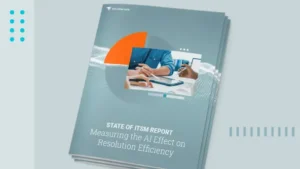For many IT teams, cloud strategies are no longer a matter of if, but how many.
For years, Application Performance Monitoring (APM) has promised end-to-end visibility. Yet as systems become more complex, traditional tools struggle to keep up.
If you landed here, you’re probably on the hunt for great free FTP server (File Transfer Protocol) software for Windows, which won’t waste your time or dent your budget–we hear you.
Databases are the heartbeat of modern business. At the center are database administrators (DBAs)—the professionals ensuring that data systems stay secure, performant, and reliable.
With the growing complexity of digital environments, the ability to observe and monitor a user’s digital journey is essential.
For today’s IT pros, the pressure is on to do more with less. Budgets are tight, but demands for performance, reliability, and security have never been higher.
For the past year, the buzz around Generative AI in IT Service Management (ITSM) has been impossible to ignore. But beyond the hype, is it actually making a difference?
When networks wobble, business does too. If links flap or latency spikes, critical applications and databases slow down or go dark, and operations feel it.
When you work in IT, you learn to accept you’ll be the hero behind the curtain, keeping systems humming and the business running.









